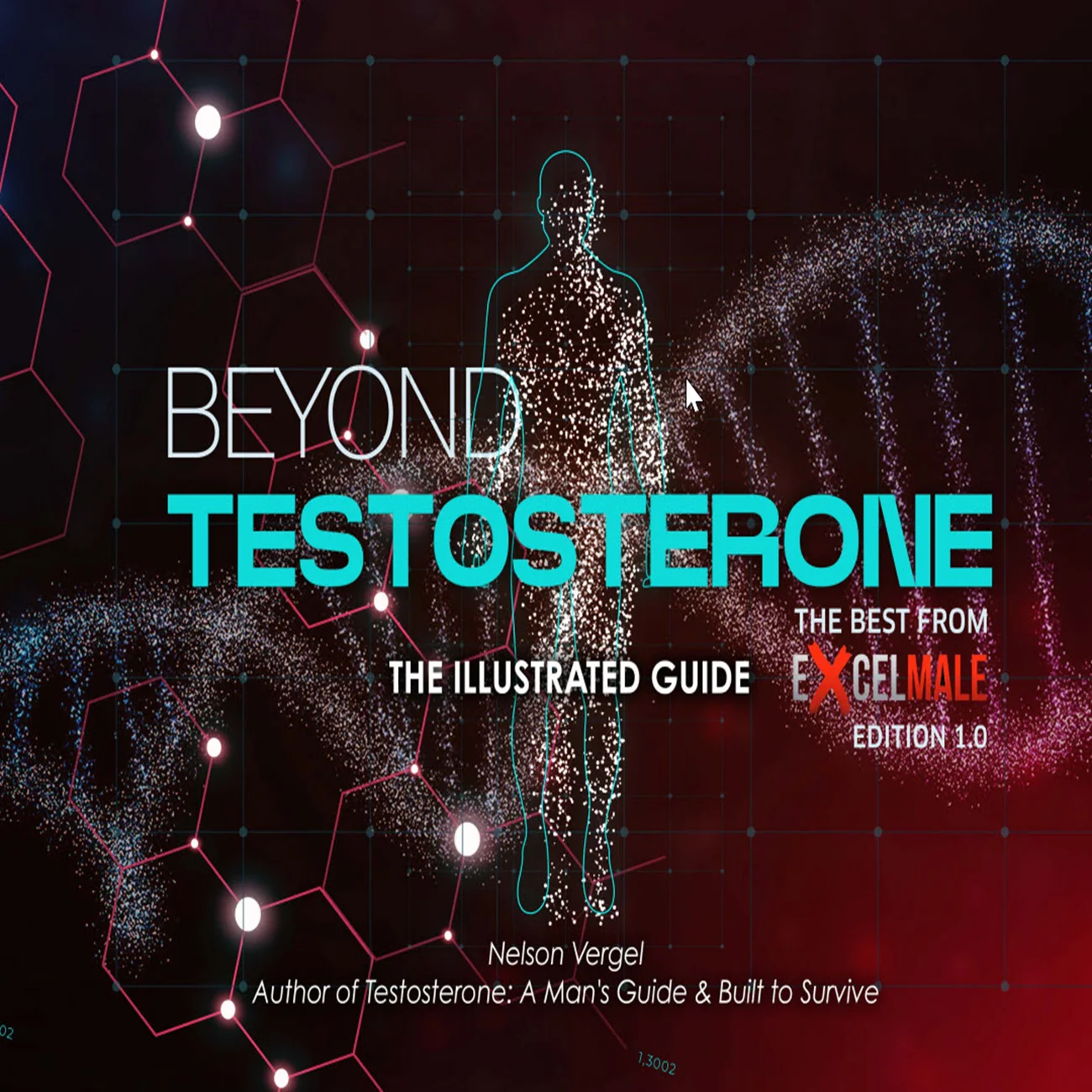Briefing Document: Hormonal Regulation of Male Sexual Desire, Arousal, and Penile Erection
Source
- Rastrelli, G., Antonio, L., Carrier, S., Isidori, A., & Maggi, M. (2025). The hormonal regulation of men’s sexual desire, arousal, and penile erection: recommendations from the fifth international consultation on sexual medicine (ICSM 2024). Sexual Medicine Reviews, 2025, 1–23.
Overview
This invited review from Sexual Medicine Reviews (2025) provides an extensive, evidence-based overview of the hormonal and neurochemical regulation of male sexual desire, arousal, and penile erection. It synthesizes findings from preclinical and clinical studies, culminating in recommendations for assessing and treating men with hypoactive sexual desire disorder (MHSDD) or erectile dysfunction (ED). The document emphasizes the primary roles of testosterone and prolactin, while also exploring the less-established or more complex roles of other hormones and neuropeptides.Key Themes and Important Ideas
1. The Multifaceted Nature of Male Sexual Response
- Definition of Sexual Desire: Sexual desire is defined as "the motivational state that may prompt individuals to seek out and engage in sexual activity." It has cognitive (thoughts, fantasy), neurobiological (hormones, neurotransmitters), and affective (mood, emotional states) dimensions.
- Male Hypoactive Sexual Desire Disorder (MHSDD): The DSM-5 defines MHSDD as "persistently or recurrently deficient (or absent) sexual fantasies and desire for sexual activity distress" for over 6 months, independent of other disorders or treatments. However, a more practical consensus defines it simply as "persistent or recurrent deficiency or absence of sexual or erotic thoughts or fantasies and desire for sexual activity."
- Interplay of Hormones and Neurotransmitters: The sexual response is a complex interplay of various hormones and neurotransmitters. Preclinical studies, primarily in rats, have illuminated neural circuits involved in sexual desire, highlighting the roles of areas like the olfactory bulb, amygdala, hippocampus, nucleus accumbens, and ventral tegmental area. Neurotransmitters like dopamine, serotonin, noradrenaline, oxytocin, melanocortin, and endogenous opioids are involved, though pharmacological manipulation for MHSDD is still in its infancy.
2. Primary Role of Testosterone (T) in Sexual Desire and Arousal/Erection
- Sexual Desire and Testosterone:
- Strong Association: Numerous epidemiological studies strongly suggest a direct association between endogenous testosterone levels and sexual desire. Low sexual desire is considered "the most genuine correlate of low T, among other sexual dysfunction issues," often unaffected by comorbidities.
- Thresholds: Several studies propose thresholds for total testosterone (e.g., 8 nmol/L, 10.4 nmol/L, 15 nmol/L) and calculated free testosterone (e.g., 220 pmol/L, 225 pmol/L) below which low T is associated with decreased libido.
- Treatment Efficacy: Meta-analyses consistently show that testosterone replacement therapy (TRT) significantly improves sexual desire in hypogonadal men. The magnitude of effect varies, and the positive effect is less apparent in eugonadal men (T > 10-12 nmol/L).
- Recommendation: Clinicians "should consider that testosterone significantly contributes to the regulation of male sexual desire" (High quality of evidence, Strong recommendation) and "should measure serum testosterone in all men complaining of reduced sexual desire" (Strong recommendation).
- Arousal/Erection and Testosterone:
- Physiological Role: Testosterone is a major hormonal regulator of penile development and physiology, acting at multiple levels (e.g., positively regulating nitric oxide generation by NOS, inhibiting RhoA/ROCK pathway, sustaining NO-cGMP pathway).
- Treatment Efficacy: Meta-analyses confirm that TRT improves erectile function (EF) in hypogonadal men. Similar to sexual desire, the effect is less pronounced in eugonadal men.
- Impact on PDE5 Inhibitors: T treatment can enhance the efficacy of PDE5 inhibitors in men with low T, suggesting a synergistic effect.
3. Significant Role of Prolactin
- Hyperprolactinemia and Low Desire: Severely increased prolactin levels (>35 ng/mL) are strongly associated with hypoactive sexual desire, with some studies reporting over a tenfold increased probability. Low libido is highly prevalent in men with severe hyperprolactinemia (up to 85%).
- Treatment Efficacy: Treatment for hyperprolactinemia (medical or surgical) dramatically improves sexual desire. The probability of remission for reduced sexual desire was almost 60-fold lower after therapy.
- Recommendation: Identification and treatment of hyperprolactinemia are "mandatory" when endocrine abnormalities are considered in sexual dysfunction.
4. Complex and Less-Established Roles of Other Hormones and Peptides
- Estrogens (E2):
- Brain Activity: Studies suggest that E2 in the brain, often formed locally from testosterone via aromatase (ARO), plays a relevant role in regulating sexual desire in men. Aromatase inhibitors (which suppress E2 production) are associated with reduced libido.
- Circulating E2: Epidemiological studies generally "did not show significant relationships between circulating E2 and sexual desire in men," possibly because local brain E2 levels are more influential than systemic levels.
- Dehydroepiandrosterone (DHEA) and Adrenal Steroids:
- DHEA/DHEAS: Routine measurement of DHEA and DHEAS is "not recommended" as they "do not contribute to the regulation of EF desire." Meta-analyses found DHEA supplementation did not significantly improve sexual desire in aging men.
- Glucocorticoids/Mineralocorticoids: May "indirectly affect the preservation of EF," but their role in sexual desire is considered indirect or minor.
- Thyroid Hormones:
- Thyroid Dysfunction and Sexual Dysfunction: Both hypo- and hyperthyroidism can be associated with low sexual desire and ED. Normalizing thyroid hormone levels can improve libido and EF.
- Routine Evaluation: Despite the association, clinicians "should not routinely perform thyroid hormone evaluation in men presenting with sexual dysfunctions" as the prevalence of thyroid disorders in this population is low and not different from the general population.
- Growth Hormone (GH) and IGF-1:
- Correlation: IGF-1 levels have been correlated with sexual function scores.
- Clinical Use: While GH levels increase during penile tumescence in healthy men, short-term GH injections have shown no effect on sexual function in healthy older men. Clinicians "should consider evaluating sexual desire and erectile function in men with growth hormone excess (acromegaly) and in men with growth hormone deficiency."
- Oxytocin (OT):
- Sexual Arousal: OT levels increase during sexual arousal and tumescence.
- Therapeutic Potential: OT is "important in eliciting sexual arousal; however, the use of these peptides or their analogs, for stimulating sexual arousal is still under investigation."
- α-Melanocyte-Stimulating Hormone (α-MSH) and Melanocortins:
- Role in Sexual Function: Melanocortin receptors (e.g., MC4) and related genes (e.g., SIM1) are implicated in sexual function and ED.
- Therapeutic Analogs: Synthetic α-MSH analogs (e.g., Melanotan II, bremelanotide) have shown promise in inducing erections and improving sexual desire in trials. However, "available studies do not support using analogs of α-MSH for improving sexual desire and erectile function, due to associated adverse events" (e.g., severe nausea, yawning, flushing, priapism). Bremelanotide is FDA-approved for hypoactive sexual desire disorder in premenopausal women, but its efficacy in men has been questioned.
- Kisspeptin:
- Neuroendocrine Role: A neuropeptide critical for regulating the reproductive endocrine axis, influencing GnRH secretion.
- Sexual Motivation and Erection: Preclinical and pilot clinical studies suggest kisspeptin can increase sexual motivation and erection. A recent RCT showed intravenous kisspeptin-54 improved sexual desire, arousal, and penile tumescence in men with MHSDD.
- Clinical Use: "The use of these peptides or their analogs, for stimulating sexual arousal is still under investigation." Potential for chronic treatment is limited due to the risk of severe hypogonadotropic hypogonadism with continuous stimulation.
5. Clinical Recommendations Summary
- Mandatory Assessments: Testosterone and prolactin evaluation are mandatory in patients presenting with sexual dysfunction due to their primary roles.
- Selected Cases: Evaluation and treatment of other endocrine disorders (e.g., thyroid and growth hormones) are suggested only in selected cases, as their disorders may cause sexual dysfunction but are not frequently recognized in patients consulting for it, or their direct role is less clear.
- Emerging Therapies: Hormones and neuropeptides like oxytocin, α-MSH, and kisspeptin show promise but require further research to establish their clinical usefulness for diagnostic and/or therapeutic purposes. Current pilot studies for these show inconsistent data or concerning side effects.
_____________________________________________
* The role of hormones in male sexual desire
Testosterone
In conclusion, preclinical and clinical evidence suggest that AR activation is not the only determinant of male sexual desire and that androgen aromatization to estrogen may play a relevant role (see below).
Estrogens
Overall, theevidence suggests that E2 in the brain might participate in regulating sexual desire in men. However, epidemiological studies did not show significant relationships between circulating E2 and sexual desire in men.17,20-22 A possible explanation ist hat brain estrogen levels, which affect sexual desire, are most probably formed locally from T through ARO rather than originating from circulating E2, which consequently does not accurately describe the intracerebral estrogen amount. In contrast with this view, a secondary analysis of the treatment arm of the aforementioned TTrials20 showed that changes in circulating E2 measured by mass spectrometry correlated better than changes in total T levels with changes in sexual desire, with an apparent threshold at 22 pg/mL.54
Dihydrotestosterone
In the aforementioned secondary analysis of the treatmentarm of the TTrials, besides E2, changes in DHT levels were significantly associated with changes in sexual desire.54 Accordingly, a meta-analysis of placebo-controlled trials for benign prostate hyperplasia with 5α-reductase inhibitors (5ARI) indicated a more than 50% increased risk of MHSDD in the treatment arm, with the risk decreased as a function of shorter trial follow-up.55
* Role of DHEA and other adrenal hormones
The European Registry on Cushing’s syndrome documented that cortisol excess was associated with a 35% and 21% reduced libido in men younger or older than 65 years, respectively.60 However, whether cortisol plays a direct role in the regulation of male sexual desire, or the latter relationshipis the result of cortisol excess-associated morbidities, including hypogonadism and mood disturbances, is unknown.6
Prolactin
Dopamine agonists (bromocriptine and cabergoline) are the first-line treatment for hyperprolactinemia, particularly when derived from prolactin-secreting adenomas.69 Cabergoline, even more than bromocriptine or quinagolide, effectively lowers prolactin levels and reduces the adenoma size.69 In prolactin-secreting adenomas, surgery may also be considereda first-line option if the risk of invasion of the cavernoussinus is low; otherwise, it generally represents a second-line choice.69
According to a recent meta-analysis of three studies assessing the change in prevalence of reduced sexual desire before and after medical or surgical treatment, the probability of remission was dramatic, with a prevalence almost 60-fold lower after therapy.68
* The role of hormones in arousal/erection
Testosterone
- Summary of evidence from preclinical studies.
- Summary of evidence from clinical studies.
Estrogens
Dihydrotestosterone
Prolactin
* Other hormones involved in the pathophysiology of male sexual desire and arousal/erection
Thyroid hormones
Growth hormone – IGF1
Oxytocin
Melanocortins
Kisspeptin
Although more data are needed, kisspeptin treatment could potentially be a pharmacological target to treatmen with low sexual desire; however, it should be considered that continuous stimulation of the GPR54 receptor is able to cause severe hypogonadotropic hypogonadism.215 Therefore,a possible chronic treatment may not be possible, or a suitable timing of administration should be considered.
Conclusions
Several hormones are involved in modulating or regulating sexual behavior in men. Therefore, it is not surprising that endocrine abnormalities are common in patients with sexual dysfunction. Epidemiological and interventional trials confirm the pivotal role of T in inducing and maintaining sexual desire and erection. Also, the role of increased prolactin levels in reducing male sexual desire is convincing. For other hormones, data are weaker, scanty, or conflictual. For hypothalamic neurohormones, such as OT, αMSH, and kisspeptin, there is room for further research due to preliminary data on theirpossible therapeutic use. However, the current pilot studies lead to inconsistent data on their efficacy or disappointing . Therefore, so far, evidence-based recommendationsmay be provided for the assessment of some but not all the hormones that are here discussed as possible modulators of male sexual function.
Last edited by a moderator:












